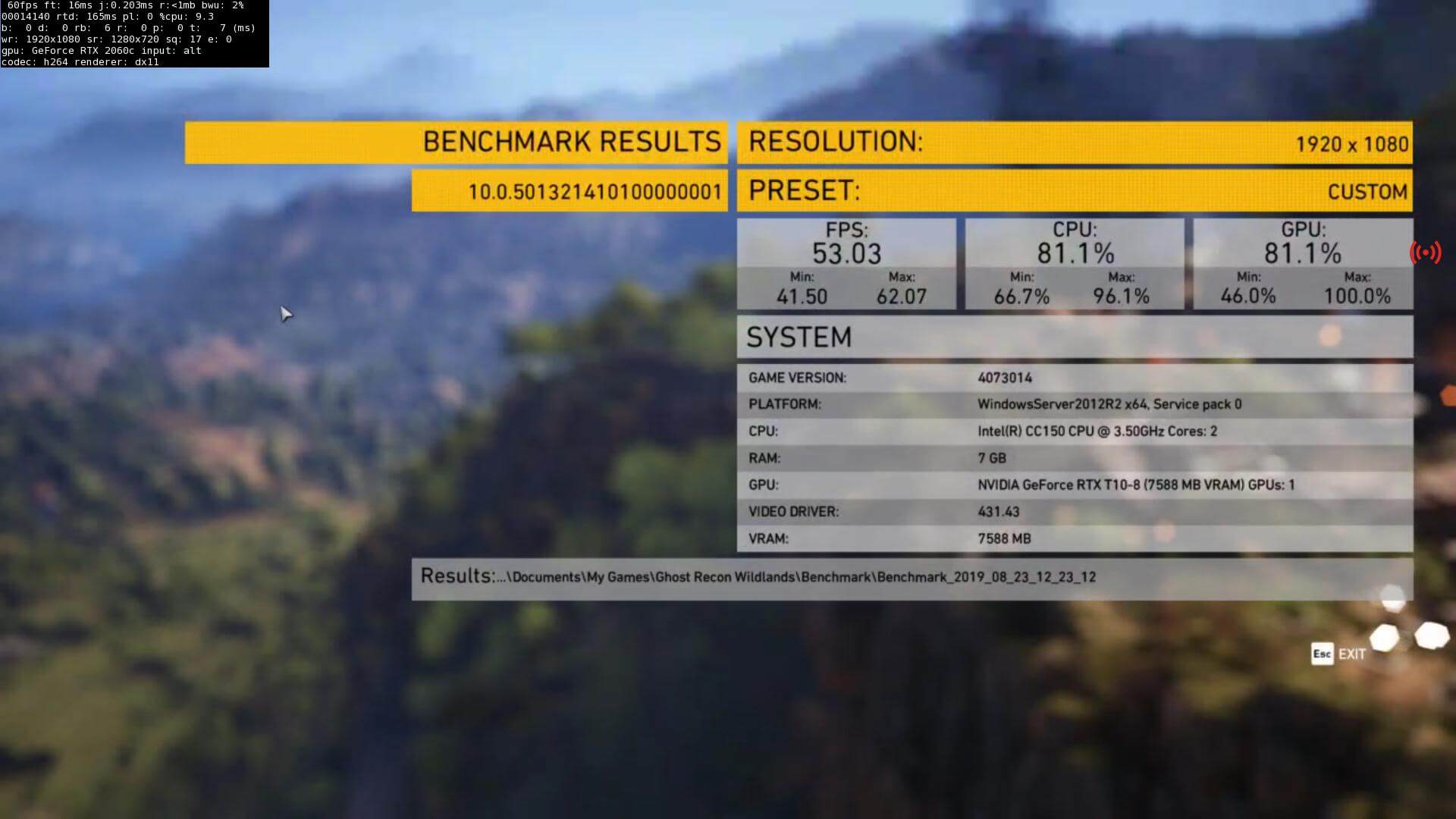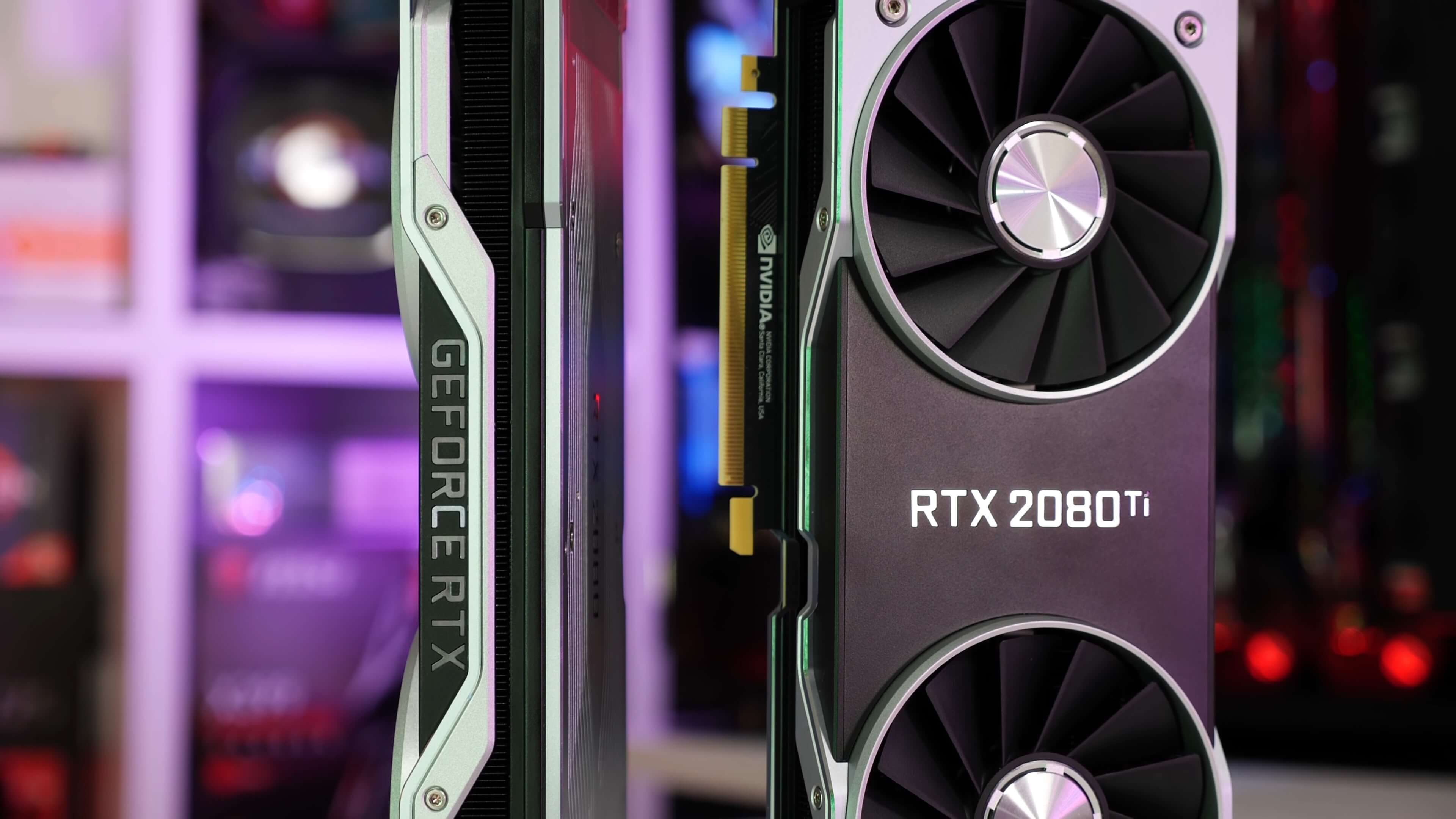Nvidia recently announced that their beta game streaming service, GeForce Now, would get the upgrade from Pascal to Turing and with it, ray tracing - only it didn't. Not only were users reporting that ray tracing options were absent, but the performance was up to 50% worse, leading the more inquisitive to investigate and discover their games were running on a new GeForce RTX T10-8 GPU – along with a variety of new and inadequate CPU and memory configurations.
Ten days ago we wouldn't have been able to say what the T10-8 is, but last week's AIDA64 update included a reference to it as a variant of Nvidia's flagship TU102 die, the powerhouse behind the RTX 2080 Ti. Ears were perked and the conclusion that a 2080 Ti Super was coming was reached, yet it now appears that the T10-8 will exclusively power GeForce Now RTX.
However, it took Nvidia less than a day to pull the plug and return users to the older Tesla P40 GPUs, with no ray tracing capabilities. Quite the whirlwind indeed. So, what could have happened?
Shortly after Nvidia's announcement users noticed the switch to the T10-8, either via playing games that list the hardware, noticing severe performance drops, or both. One user had Ghost Recon Wildlands detect a dual-core system with 7 GB of system memory and an RTX T10-8 GPU with 8 GB of memory, all running on Windows Server 2012. That last part may explain the issues with ray tracing: Windows 2012 doesn't support Microsoft's DXR ray tracing implementation, and Nvidia's initial fix might've not been as good as it needed to be.

A few other things didn't add up, like the GPU's average usage during the Ghost Recon Wildlands 1080p benchmark at 81% on a dual core CPU and just 8 GB of memory, so it's possible (and this is just speculation) each user was given half a T10-8 to game on. There's some evidence for this: one user found a 48% reduction in Fire Strike score between the P40 (equivalent to the GTX 1080) with a regular CPU and RAM configuration, and their T10-8 system with slightly worse CPU and RAM numbers. A few users who apparently didn't witness any performance drop report their T10-8 systems as having 16 GB of memory.
What may have occurred is that Nvidia's marketing team outdid their engineering team, building up enough hype about ray tracing on GeForce Now that every user decided to log on and test it out simultaneously, exceeding the number of supported systems. As an automatic fix, the software could have divided each system into two virtual ones, doubling the number of possible players but halving the performance.
Since the initial release several days ago, however, the reports of poor performance and broken ray tracing have ceased, so it seems likely things are working as they should for most players.
The bottom line is there's no RTX 2080 Ti Super coming to the mass market for now. This isn't a huge surprise considering Nvidia can't squeeze another configuration between the 2080 Ti (4352 cores) and the Titan RTX (4608 cores) without drastically sabotaging one. On the flip side, GeForce Now users should get a nice performance boost with the T10-8 once the bugs are ironed out.
